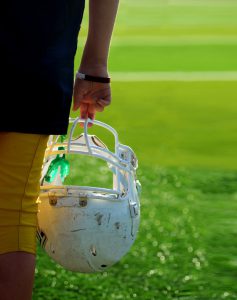4 Most Common Injury Types in Touch Rugby
Touch rugby is a sport quite similar to rugby. The difference is that in touch rugby, players don’t tackle like they do in rugby. It is allowed to touch the rivals’ body parts, sports uniforms, and the ball while tackling is not an option. Touch rugby is still considered a contact sport, and it has a greater risk of injury than other types of sport.
In case you want to find out more about some of the most common injuries that occur in touch rugby, keep on reading.
Concussion

One of the most dangerous but common injuries in touch rugby is concussions. These are head injuries that temporarily affect brain functions. Besides, the injury occurs when the head suffers a direct blow upon impact with other players or the ground. Conclusions are considered the most common injury in Premiership League rugby.
A common misconception is that conclusions happen only when you pass out, but actually, that is not true. If the player has headaches, feels dizzy, or has problems with his balance, it’s good to seek out advice from an expert.
Every concussion, even the smallest one, is dangerous, and players are always advised to rest in order to recover. After a concussion, the player shouldn’t start training until an expert approves and allows that.
Dislocated Shoulder
Shoulders pop out of the joint as a result of a harder tackle or a fall where the arm is placed in an unnatural position. This injury requires expert medical help to pop the shoulder back into the joint without the risk of causing an even greater injury. To treat the injury and heal the shoulder, the player needs to rest at first and even consider incorporating physiotherapy to help the shoulder heal faster.
Strains and Sprains

The main reasons why strains and sprains occur are sudden starts and stops, abrupt change of directions, or poor landing and falling. The ligaments and muscles can overstretch in these situations and cause strains and sprains. They are present in every sport but are more common in touch rugby because of the nature of the sport and movements that tend to cause such injuries.
Recovery can vary depending on the severity of the strain or sprain. It can last from a couple of days to a few weeks, and some cases might even require surgery and a long resting period.
Soft Tissue Injuries
The high speed and movements typical to touch rugby can also cause some soft tissue injuries such as bruises, sprains, and muscle contusions. These usually occur in lower limbs and other lower parts of the body like the groin, ankles, knees, and more. Sore muscles, muscle fatigue, and tightness, known as soft tissue injury, are another common injury in touch rugby. Normally, these small injuries will be gone in a couple of hours or in the next few days. If that’s not the case, it’s strongly recommended to go and see a physiotherapist if the pain continues after a couple of days or gets worse.

